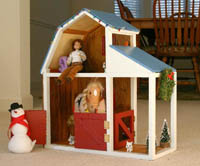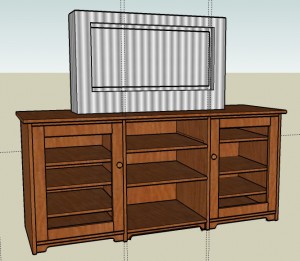I’ve recently jumped into the world of home-built Personal Video Recorders (PVR). What does this mean? I set up a computer next to the television, connected it to a hardware-based encoder, and use it to capture over-the-air analog TV broadcasts onto a hard drive in a format that can later be easily played on the TV (through the video card output) or archived onto a DVD. It also allows me to “pause” live TV and to even access the programming guide from the Internet to make changes.
This wasn’t an extremely simple task, but came together rather well after a little bit of research. This section summarizes my approach.
There are two major components to my setup: the hardware (computer & capture device/encoder), and the software.
Hardware
My computer consists of a 800 MHz Pentium III with 256 MB RAM, a 120 GB hard drive, Soundblaster-compatible sound card, and a Gigabyte Radeon 9550 video card (S-video output available). It is running Windows XP Professional. I’ve made a couple of tweaks to the hardware in an attempt to reduce the noise level, having discovered that the CPU fan and the power supply fan created the most significant amount of noise. Consequently, I replaced the CPU fan with an extremely quiet “Scythe Katana CPU Cooler,” and am running it at a reduced speed by using a Zalman Noiseless Resistor Cable which lowers the voltage. I also purchased an Antec Smartpower-series 500W power supply.
The Hauppauge WinTV-PVR-USB2 is my hardware encoder of choice for capturing analog over-the-air video. I can easily feed It provides the standard S-Video and composite video inputs (one each) and RCA-type audio input plugs, and feeds the video through a USB cable already converted into MPEG-2 digital format.
Software
Sometimes the best things in life truly are free. I’ve discovered a great software package that does just about everything, including downloading a broadcast program guide periodically: GB-PVR. It is undergoing active development and even supports plug-ins (for instance, it will download the weather forecast and allow you to read your e-mail on the TV).
To get the program guide, you’ll need to sign up for an account at Zap2It. Zap2It does not charge for this service, but will require you to renew your account every three months by answering a few survey questions (a minor price to pay for this capability).
Special note on WinTV-PVR-USB2 Audio Levels
Hauppauge haven’t released any guidance on adjusting the audio levels for the WinTV-PVR-USB2. I’ve done some digging…. and found a solution.
The Hauupauge WinTV-PVR-USB2 is a great external device for capturing analog video and converting it into DVD-compatible MPEG2 streams. I’ve only found one problem with it: For some sources, the audio levels are set too high. In both live TV recording and external source capturing, the audio on my unit is too ‘hot’, causing distortion whenever sound levels reach peak values. Unfortunately, Hauppauge does not provide an easy (or documented!) mechanism to change the recorded volume. You cannot simply change the recording input level with your sound card utility or the Windows audio controls. Why? Because the sound is sent along with the video through the USB port, already digitally encoded (in MP3 format), and never passes through your sound card. There are no adjustment controls provided in either the hardware or the WinTV2000 software.Unfortunately, there is no simple ‘volume control’ or other mechanism for adjusting it.
So what is the solution? This took me over a week of fiddling, e-mail exchanges with Hauppauge’s tech support, and Internet searches to discover this ‘trick.’
‘Device Manager). Expand the ‘Sound/Video Game Controllers’ branch and select the Hauppauge device. Right-click and ‘update driver’; when prompted, select the temporary directory where you installed the files. After installation, be sure to reboot your computer.
Next, run the Windows Registry Editor (regedit). Recommend making a backup of your registry first, though, just in case you accidentally change or delete something that should not have been edited!
Go to the Windows XP ‘Start’ menu and choose ‘Run’. Enter ‘Regedit’ and hit the ‘OK’ button. Proceed through the trees and locate the following branch:
My Computer\ HKEY_LOCAL_MACHINE\ SYSTEM\ ControlSet001\ Services\ Conexant\ Parameters\ ivac15\ DrvUSB
Look through the list of keys to see if you can locate an ‘Scart1Volume’ key. If it isn’t there, you’ll need to add one by following these steps:
1. Right-click on the DrvUSB branch and select “New | DWORD Value’.
2. Enter ‘Scart1Volume’
3. Right-click on ‘Scart1Volume’ and select ‘Modify.’
4. Enter a hexadecimal value of 7301 (the default box configuration) and click OK, then restart your computer.
The volume level can be changed by modifying the data value for the Scart1Volume key. The last four digits should look something like this (and will be identical if you’ve entered the key manually as above): ‘7301’. You will only change the first two digits of this last set of four (e.g., the ’73’). DO NOT change the last two digits; they should always be ’01’.
The volume level is represented in a hexadecimal (base 16) format. As far as I can glean from tech support and sparse information scattered on the web, each hexadecimal increment from 73 represents a 1 decibel value in volume level. For instance, to achieve a 3 dB drop, enter ’70’ in place of the 73. Finding the actual value to use involves a little bit of trial and error; for my camcorder, replacing the ’73’ with ‘6d’ (a drop of 6 dB) is sufficient.
One final note on this topic: I’ve only tried this on my Windows XP machine using a single Hauppauge device. I can’t confirm with certainty that it will work on yours, with your versions of firmware, software drivers, etc. You may wish to try setting this value to ’00’ (effectively muting the volume) first just to make sure this registry entry works; if it does, then go to work experimenting and selecting the appropriate value.
 It was the spark that started the fire… and got me interested in working with wood. My oldest daughter finally got her request–Daddy built her a toy stable for her horses!
It was the spark that started the fire… and got me interested in working with wood. My oldest daughter finally got her request–Daddy built her a toy stable for her horses!

